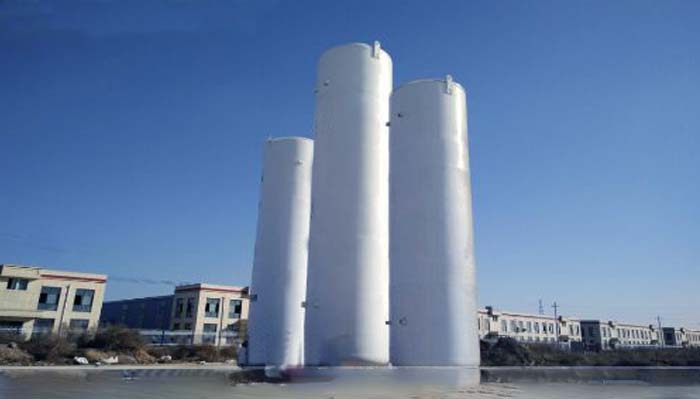Product Category
Inspection of cryogenic liquid storage tanks
Date: Feb 19, 2020

When the cryogenic storage tank is in working condition, there are potential dangers such as leakage, overpressure, and explosion. If the hidden dangers before these accidents are not found and dealt with in time, they will develop into serious accidents. Therefore, the establishment of a comprehensive cryogenic storage tank inspection system and careful implementation are very important to ensure the safe operation of pressure vessels. The daily inspection of storage tanks mainly includes the following:
1. Whether the valve and pipeline of the cryogenic storage tank are leaking, and whether the casing is frosting or sweating.
2. Whether all the valves of the storage tank are in the normal opening and closing state.
3. Whether the cryogenic storage tank meter (level gauge, pressure gauge) works normally, and whether the DCS display parameters are consistent with the on-site meter.
4. Is the pressure in the pressure vessel storage tank normal? When the pressure is close to or equal to the maximum pressure, the vent valve needs to be opened to release the pressure.
5. Whether the liquid filling rate of the storage tank exceeds 95%.
6. For normal pressure powder insulation tank, is the sealing gas normal? (50mmH2O)
7. It is strictly prohibited to place flammable and explosive items and all sundries near the liquid oxygen storage tank. 8. Fireworks are strictly prohibited near the liquid oxygen cryogenic storage tank.
8. Fireworks are strictly prohibited near the liquid oxygen cryogenic storage tank.
9. Test the content of acetylene and total hydrocarbons in the liquid oxygen of the storage tank at least once a week. The content of acetylene must not exceed 0.1 × 10-6 (v / v). When it exceeds, the liquid oxygen must be discharged in time for replacement treatment.
10. Whether the cryogenic storage tank is well grounded.
11. If it is not used for a long time, it is necessary to ensure a certain amount of liquid in the storage tank, so as not to re-cool the replacement tank and take a long time.
12. Whether the legs of the cryogenic storage tank are damaged, whether the foundation sinks, tilts, or cracks, whether the fastening bolts are intact, and whether the tank is deformed.
13. Regularly check the vacuum of the storage tank.
1. Whether the valve and pipeline of the cryogenic storage tank are leaking, and whether the casing is frosting or sweating.
2. Whether all the valves of the storage tank are in the normal opening and closing state.
3. Whether the cryogenic storage tank meter (level gauge, pressure gauge) works normally, and whether the DCS display parameters are consistent with the on-site meter.
4. Is the pressure in the pressure vessel storage tank normal? When the pressure is close to or equal to the maximum pressure, the vent valve needs to be opened to release the pressure.
5. Whether the liquid filling rate of the storage tank exceeds 95%.
6. For normal pressure powder insulation tank, is the sealing gas normal? (50mmH2O)
7. It is strictly prohibited to place flammable and explosive items and all sundries near the liquid oxygen storage tank.

9. Test the content of acetylene and total hydrocarbons in the liquid oxygen of the storage tank at least once a week. The content of acetylene must not exceed 0.1 × 10-6 (v / v). When it exceeds, the liquid oxygen must be discharged in time for replacement treatment.
10. Whether the cryogenic storage tank is well grounded.
11. If it is not used for a long time, it is necessary to ensure a certain amount of liquid in the storage tank, so as not to re-cool the replacement tank and take a long time.
12. Whether the legs of the cryogenic storage tank are damaged, whether the foundation sinks, tilts, or cracks, whether the fastening bolts are intact, and whether the tank is deformed.
13. Regularly check the vacuum of the storage tank.
Last article:
Send Your Inquiry
We not only provide a good product, but also provide high quality service. If you are interested in our products,
you can contact us in the following ways.
you can contact us in the following ways.















































































































